Interview: In The Studio With Artist Faye Wei Wei
By Something CuratedWithin a few short years of graduating, British-Chinese painter Faye Wei Wei has made a distinct mark on London’s art scene, exhibiting her dreamy and alluring portraits of lovers dancing hand in hand beside bewitching mythical creatures. After a successful solo show at The Cob Gallery in London, she is now ready to head to Los Angeles in preparation for her upcoming exhibition. Entitled Sweet Bitter, Valentine, the new body of work delves even deeper into themes of duality and romance. Something Curated caught up with the young artist at her studio in South London to talk art history, diversity and food.
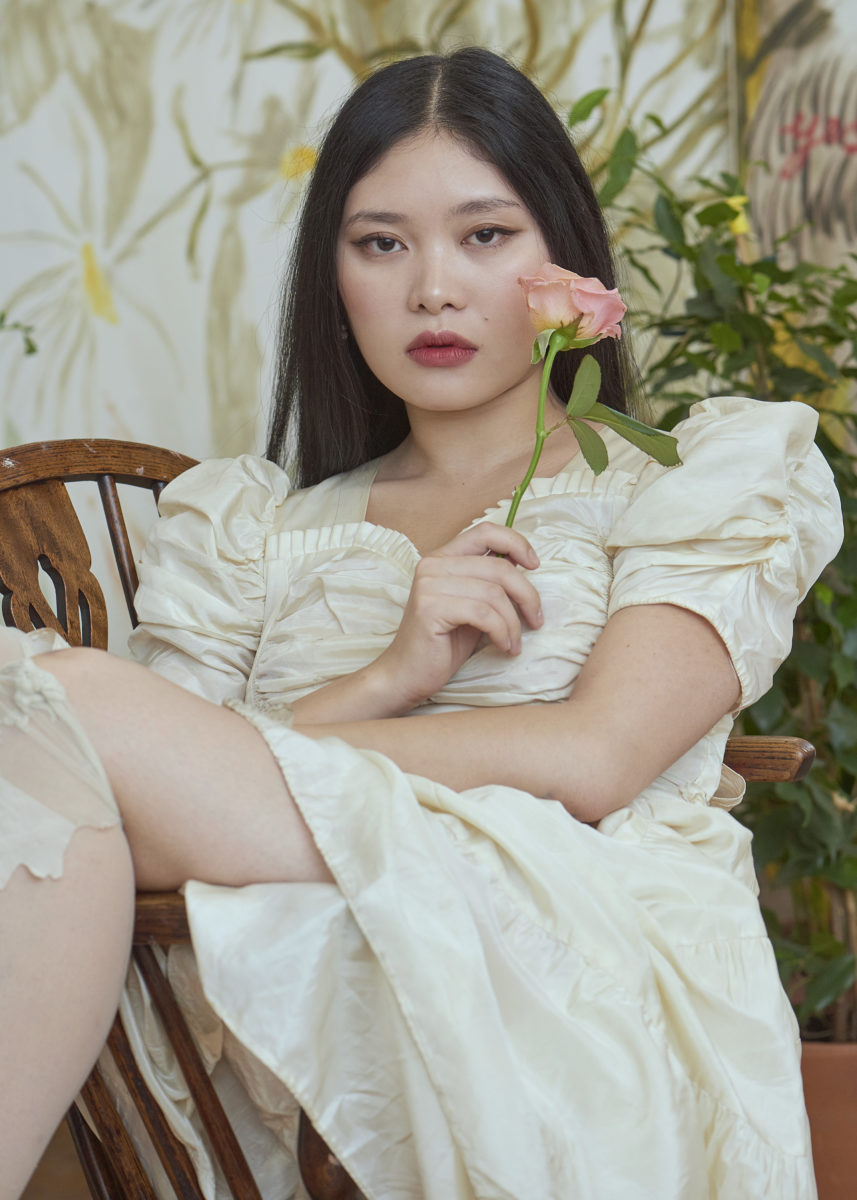
Something Curated: Of all artistic mediums – why did you choose painting to express yourself?
Faye Wei Wei: Paint is such a fascinating mud and the possibility for image making is so great. The surface of a canvas or piece of paper is infinite, and you can endlessly amuse yourself. The colours and the feeling of painting itself also seduce me. I am attracted to the emotional power that paint can throw upon people. It has the ability to record a vague human touch and for me it is the most immediate way of expressing myself. I also like how I don’t have to rely on anyone else. I can be in my world – and do everything on my own – from priming to stretching, to sizing the canvas, to choosing the paint.
SC: You recently graduated from UCL’s Slade School of Fine Art. How easy was the transition from leaving art school to being out there?
FWW: It is scary for anyone leaving school. At Slade, I was surrounded by so many gifted people, and this kind of atmosphere forces you to constantly push yourself to do the best work possible. As a result I am very driven, hard working and ambitious. The challenges are definitely there but they can work to your advantages: being young, being a woman, and being of colour. I think I came out of art school knowing exactly what I wanted to do. But I am really blessed to have had such an amazing education. I owe so much to my teachers and talented friends. When I left school I was also lucky to have met the people who helped me have a show, who supported me and believed in me.
SC: Your paintings are very personal and trace different emotional states. Can you tell me a bit more about this alternative form of “journal keeping”?
FWW: I started painting when I was 14 and I made a lot of abstract paintings. Abstraction is such a direct way of expressing your inner mind. But I still wanted to have figurative elements in my paintings as well. There is a real beauty in making both abstract and figurative work and seeing how all of the elements balance each other. Most of my paintings are about love, a sort of mummifying of all the secrets and all the emotional intensity of feeling into the canvas. Old canvasses bring me back to times before. I can look back and trace my personal history. But they are not as revealing as a journal would be. I give them a bit of smoke so you don’t see the total truth of it. This is why I like painting and poetry so much – they express metaphors.
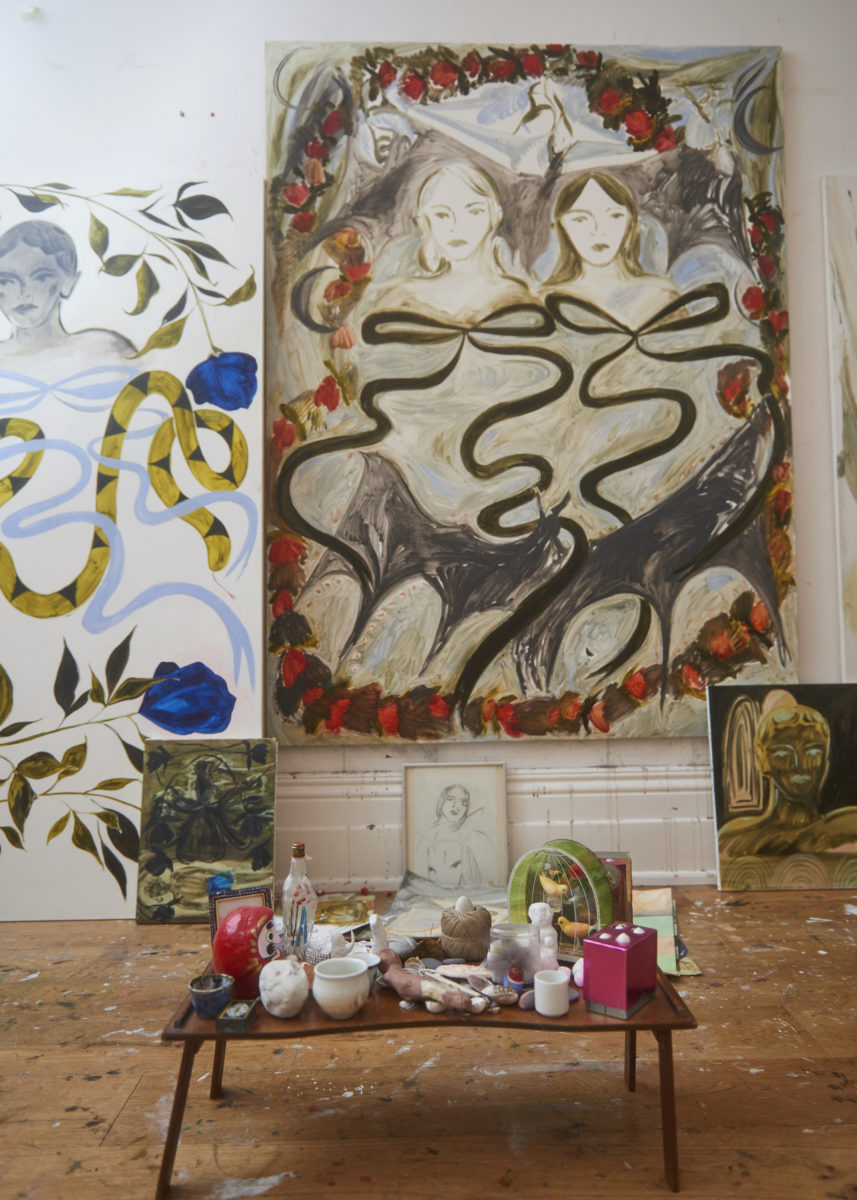
SC: But even if your paintings refer to a personal story, the viewers can still relate to it and see universal messages. How do you feel about that special, enduring connection between artists, viewers and their art?
FWW: There is a sort of comforting familiarity. In one of her essays Virginia Woolf talks about the universality of poetry which I believe can also be applied to painting: “The very reason why poetry excites one to such abandonment, such rapture, is that it celebrates some feeling that one used to have, so that one responds easily, familiarly, without troubling to check the feeling, or to compare it with any that one has now.” With anybody connecting with a piece of art it is because it is both personal and universal at the same time. I hope that this is what people get when they look at my work.
When you look at an image of romance, you are seduced by the memory of it. I make paintings to evoke the remembrance of an embrace. I am trying to bring people back to a moment of love or when they were holding someone dear to them. I have always been interested in that renaissance of idea of the highest point of drama in a painting. Renaissance painters wanted to capture the moment where for instance Christ is disappearing, the moment where someone has been stabbed with an arrow. I like the drama of that, the piercing moment. The body of work I am currently working on is wrapped around this romance I have been having. It is the two of us constantly blooming out of these flowers. I am trying to catch the sweet moment of falling in love, before the bitterness starts.
SC: You seem to be drawn to dual elements. I noticed that you often use symbols such as snakes, flowers, darkness, light… do these pairs have a meaning?
FWW: Maybe because of the size of the canvas I usually use, I like exploring the tension between two figures. When I am painting, I am thinking about the two halves of the canvas vibrating next to each other. That’s the composition I have long been captivated by. I am interested in this duet between two people but also the two halves of a walnut, the two halves of your heart, your left and your right hand, Ages ago I made this painting of a tiger dancing with a human. But the symbolism of the current body of work is connected to flowers. I lived with a florist (the wonderful Katherine at Entriken Flowers) in NY and I spent hours watching her work with such grace and sensitivity.
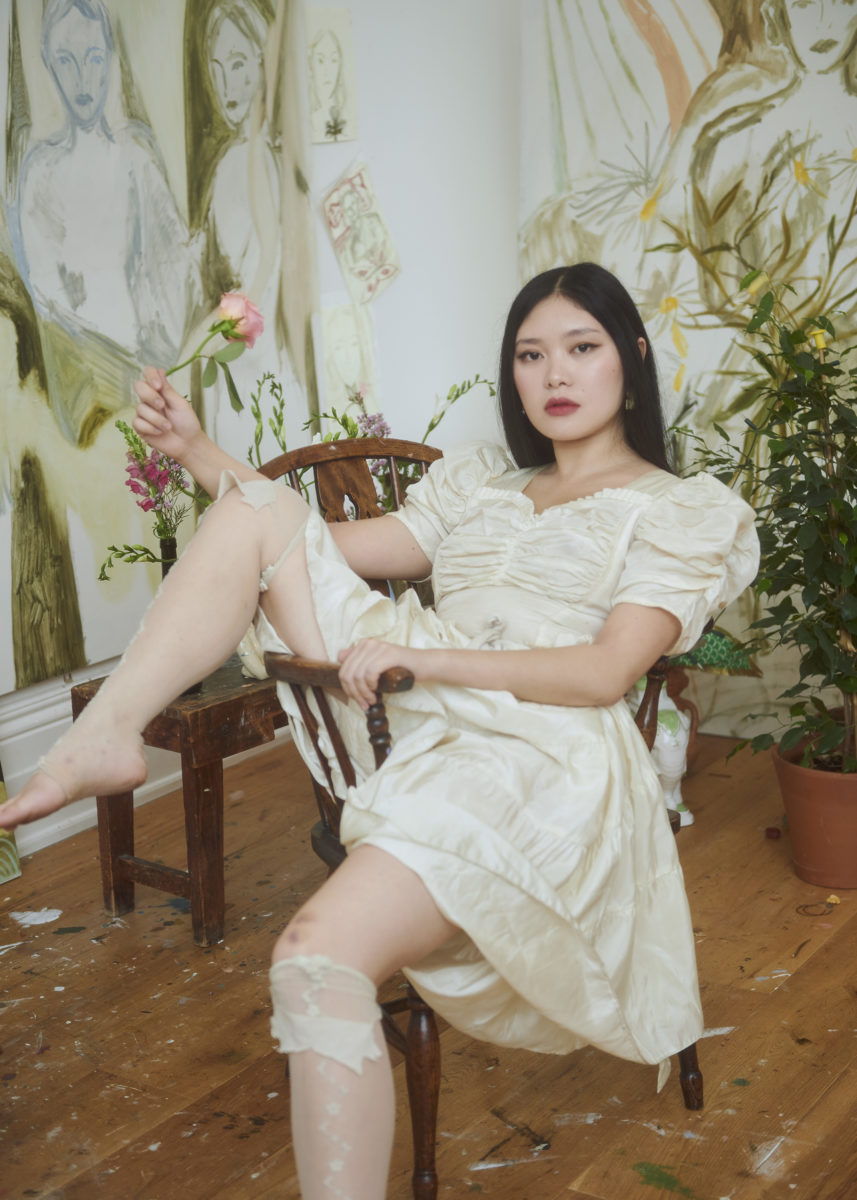
With flowers, there is a language to them we do not fully understand anymore. People used to be way more in tune to that. During the Victorian Era, it was popular to use flowers to send secretive messages. Now, I couldn’t even name a flower but I guess you can be instinctive with it. This morning I went with my mum to the fishmongers and I stopped by the flower shop. I never buy the premade bouquets; I pick the ones I am intrigued by. Once home, I love being surrounded by all the beautiful smells and colours; it feels so special. In most of my recent paintings, there is this mythical blue flower. The glowing blue pigment is remarkably alluring.
SC: You touched upon poetry being a big source of inspiration. Would you mind sharing what you are reading at the moment?
FWW: I am reading The Faerie Queene by Edmund Spenser. It is an epic poem in which he criticizes the Queen and talks about this sacred place called the Bower of Bliss – a source of earthy pleasures and temptations. I have been deeply thinking about the notions of utopia and paradise lately. In T.S Eliot’s poem Prufrock, there is a moment where he is daring to go and see these women. He cuts of their limbs and he evokes this erotic image of bare arms. It is very seductive because he wouldn’t dare imagine anything else but the women’s wrists.
I am also reading another book by Anne Carson who translated numerous Sappho poems. This book is called Eros the Bittersweet and one fragment of a poem goes like this:
“Eros once again limb-loosener whirls me
Sweet bitter, impossible to fight off, creature stealing up”
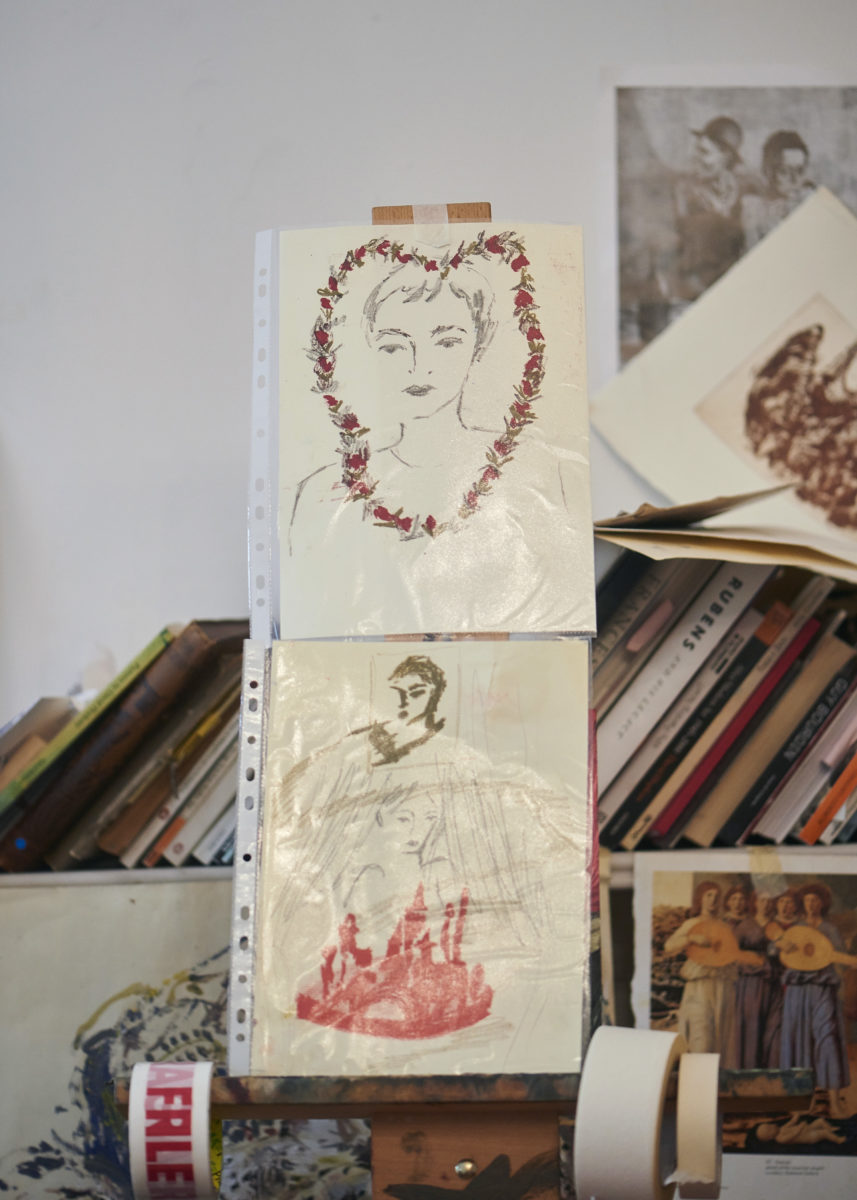
The title of my next show in LA – Sweet Bitter, Valentine – is inspired by this fragment which charts the fatal trajectory of love (from sweet to bitter) and the components of love (both sweet and bitter). I want to explore the chronology of these two words, these two states. More often than not, when in love, these two states are intermingled. There is an awareness of what is yet to come; the sweetness doesn’t last forever. Again this relates back to my paintings. They are a record of my youthfulness, this naïve belief in love as a form of paradise. However, I also – as a contemporary artist – want to fit within a timeline of art history. I want my paintings to be both modern and relevant while being a trace of my own life.
SC: What would you say is the general tendency in painting right now?
FWW: Going to art school you would think you have some sort of an insight but it is more complicated than that. Still, there are definitely trends within painting. I am under the impression that it is becoming more pleasurable. There are also a few specific motifs I keep seeing: curtains, lizards, ladder, mirrors, masks, goblins, devils, and snakes. Overall, the colour palette is becoming quite moody, sinister.
SC: You are also conscious of your place as a WOC in the current art scene. Do you feel like you have any responsibility towards other girls who might look at you for inspiration?
FWW: I think it is important to connect my face to my work. I want younger girls – especially Asian girls – to feel that making art could be a possibility for them. It used to be normal for art not to be a diverse place but it is slowly changing. But art can be a real source of empowerment. It is really important to have this support, especially in a place as competitive as London.
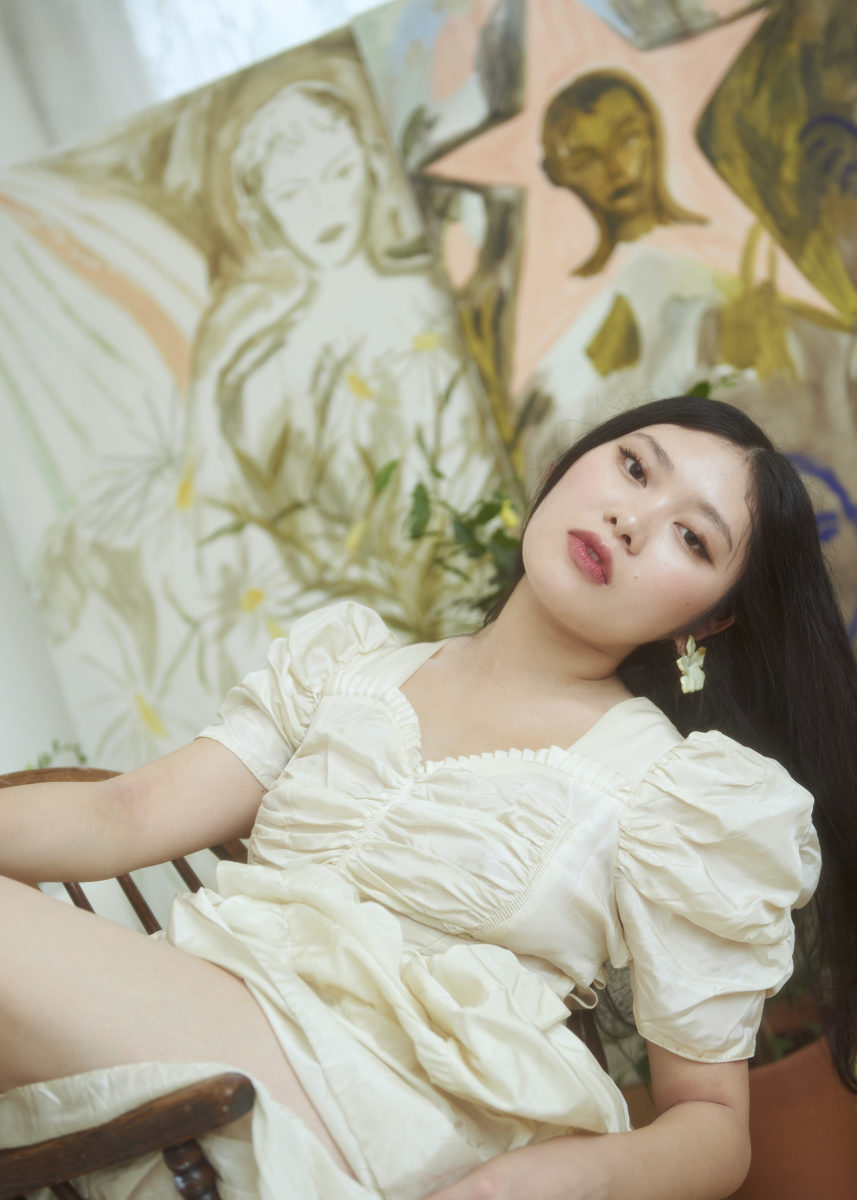
SC: You spent time in Athens but also in Japan, NY, LA and of course London and Berlin. What have you learned from these travels and what has London to offer in comparison to other cities?
FWW: London will always be my home. But I am really greedy and I enjoy over-stimulating my senses. Thanks to my work I am often travelling and I can go visit friends and family in different parts of the globe. I might move to Berlin because my brother lives there and I really miss him. People there don’t seem to be suffering in the way many in London and NY do. Everything (for now) is a lot cheaper. I guess I just want to pass my time well and be surrounded by beautiful things.
SC: In London what is your favourite restaurant?
FWW: St. John for eating liver and heart. Is there anything more romantic than sharing a plate of hearts with your lover? Wong Kei for Chinese. Get beef brisket with mai fun in soup. Jugemu for Japanese. They have the most stunning scallop sashimi. The Regency Café for the best English breakfast. Kempton Antiques market at 7am with my dad for a bacon bap and a cup of tea.
SC: Your favourite cultural venue?
PDA at Bar A Bar.
Sweet Bitter, Valentine at SADE, Los Angeles | 8 Sep – 13 Oct 2018
SUBJECT (Group Show) at The Cob Gallery, London | 3 – 27 Oct 2018
Interview by Caroline Astaes | Photography by Michiyo Yanagihara